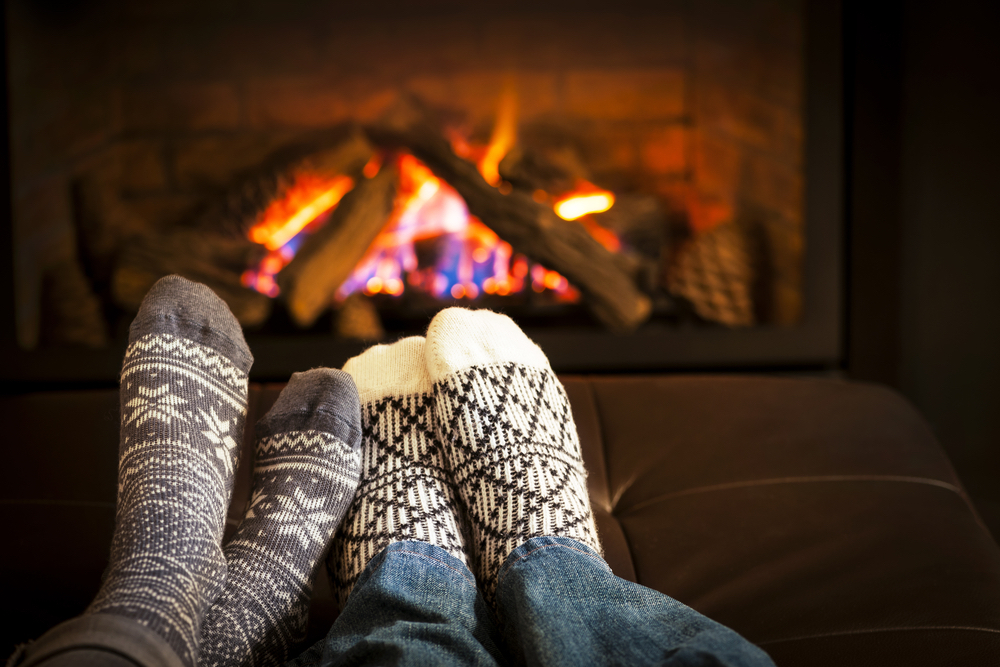Can you cut 1 Tonne of carbon pollution out of your life?
Take the challengeWe’re all about energy neutral ways to warm up, but where can we turn if we need something more than an extra layer?
When I was younger and complained about being cold, my Grandmother, a bold old lady who grew up during World War II, would boil a pot of water and cook potatoes. She would give me two or three of these boiled potatoes to carry around in my pockets, calling them the perfect heater, because once they cooled down we would be able to eat them.
At 1 Million Women we aren't in the habit of carrying potatoes in our pockets, but we are passionate about energy conservation and using energy natural tricks to stay warm. We are big fans of using blankets, extra layers or hot water bottles to warm up when it cools down!
But sometimes - for me at least - those natural heaters aren't enough. Sometimes, with a vague sense of guilt, I cave and turn on the electric blanket or heater. Heating makes up 40% of all household energy use so I don't think I'm alone in this. Forty percent is a big chunk of our energy bills - so there is no doubt incentive to address the best way to heat up a space - using a heater with high energy efficiency could save you a bunch of money, too.
So what are the options?
Read next: 7 tips for staying warm, Naturally.
Gas Heaters require the installation of gas outlets, which can be expensive, but produce one third of the green house gases produced by an electric heater. They are economical to run as they only heat a specific spaceContrastingly, Portable Electric Heaters have a minimal one-off payment but are expensive to run due to a high level amount of energy expenditure. Space heaters should only be used in rooms twelve metre squared or less, they aren't designed to effectively heat large spaces.
Reverse Air Conditioners are the most energy efficient type of electric heaters and are able to heat large areas of a house. The same unit has the potential to provide both heating and cooling, however they are more expensive than gas heating to install. Ducted air conditioners use at least 50% more energy than ones which heat a single room.
There are lots of different varieties of Central Heating systems which each have different associated environmental impacts. The zoned heating systems, which cost slightly more to set up, produce the most energy efficient response.
Overall, the most energy efficient to heat an entire house are the zoned central heating systems or a reverse air conditioner. Gas heaters are most appropriate for a specific room, and have the overall lowest energy expenditure. If possible, stay away from those portable space heaters. Want more information check out this great resource that calculates the energy produced by various house hold appliances.
But the type of heater you use isn't the only thing to take into consideration. No matter how efficient the heater is or isn't, there are still ways to minimise energy consumption on those cold winter nights.
Only heat specific areas
Only heat up what you absolutely have to. Close the door to rooms that you won't be in, use a door sock to stop draughts. By limiting the areas you heat, you can easily halve the energy you could have used heating the whole house.
Another pattern to get into is turning off heating systems at the wall when they aren't in use. Standby power can account for up to 20% of the energy use for an appliance, so this gives you a chance to slash your energy bills by one fifth.
Read next: Why solar power for your home is worth it!

Don't boil yourself
As tempting as it is when you are cold to overcompensate by setting the thermostat on 30 degrees Celsius (85 degrees fFahrenheit), it probably isn't the wisest option. The human body is most comfortable in temperatures between 18-24 degrees Celsius (64-75 degrees Fahrenheit), and any hotter than that isn't great for you.
If you're desperate for the extra degrees, put the temperature up for the shortest time possible, before returning it to a more neutral zone.
Heat for short periods of time
It can be tempting when you are cold to sit on top of your heater. But the best way - for both you and the planet- to heat up a room is to put the heater on a high temperature and let the room warm up, before turning it off.
As winter draws to a close, we're looking forward to the temperature warming up. In the meantime, a little thought about what heater we use and how we use it can go a long way in limiting our carbon emissions.
Read next: 8 hacks to keep you and your house warmer this winter
1 Million Women is more than our name, it's our goal! We're building a movement of strong, inspirational women acting on climate change by leading low-carbon lives. To make sure that our message has an impact, we need more women adding their voice. We need to be louder. Joining us online means your voice and actions can be counted. We need you.

